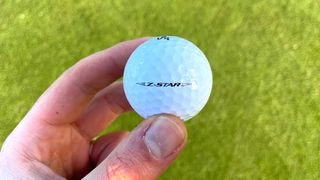Srixon is now into its ninth generation of Z-Star and for 2025, the brand has made some fairly significant changes to the design and more importantly the materials used in this premium ball that golfers should be able to notice in terms of performance ramifications.
The three-piece Z-Star has always been the softer-feeling ball within its premium line up and that mantra hasn’t changed. New for this iteration, however, is a reformulated FastLayer DG Core 2.0, which starts soft at the center and gradually firming from the inside out for optimum spin and distance output. There’s also a Spin Skin+ coating that increases the cover’s friction for added greenside spin. The use of a stronger urethane paint in this generation also helps improve resistance to dirt and grime.
(Image credit: Future)
But arguably the headline tech story is the newly formulated, extra thin premium urethane cover made with biomass materials derived from biopolyol extracted from corn. This is said to reduce carbon dioxide emissions during the manufacturing process when compared to traditional petroleum based methods. Based on previous years’ global sales, Srixon suggests this will equate to a reduction in carbon dioxide emissions by approx 30.7 tons, or the equivalent of 31 million plastic bottles.
We’re in no position to refute this claim, but it would be interesting to see if there was any trade off in performance so I took the balls to Peterborough Milton golf club to test them indoors on the Foresight Sports GCQuad launch monitor before taking them out on to the course.
Compared with the 2025 Z-Star Diamond and Z-Star XV, which are both played out on tour, the standard Z-Star did fall short in a few key performance metrics. The lower compression core meant for our driver swing speed (108mph) it was significantly down on ball speed. It also spun the most with the driver – not excessively but enough to create shorter carry distance by eight yards on average. It was far more comparable to the other two balls with a 7-iron and offered a good amount of spin and control on partial wedge shots. Slower swing speeds may well find these performance characteristics more useful with the driver but many good players will likely experience a better total package with the Z-Star Diamond and Z-Star XV.
Where the Z-Star really separates itself is with the feel. It feels noticeably softer off the face than pretty…
..
Click Here to Read the Full Original Article at Latest from Golf Monthly in Reviews…
